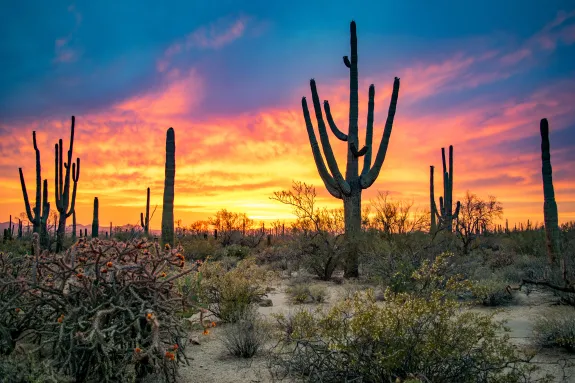
The Chesson Lab
Our Questions
Ecological diversity and its maintenance
The diversity of life is the wonder of the world. It inspires us, but it challenges us to explain it too. Sadly also, diversity is under threat on many fronts from human activities. To confront this threat we need better understanding of the maintenance of diversity. The diversity of life involves ecological diversity: different organisms do different things in the aid of their lives and their offspring. Some differences are subtle. Some differences are gross. How do these differences arise, and what is their role in maintaining diversity? How do the attributes of species predict community change with environmental change?
General testable community theory
To understand diversity maintenance, we need theory for ecological communities. It must be realistic enough to contain the key features behind diversity maintenance in nature, it must be general enough to be robust to variation in minor features, and it must be testable too. Nature has many complexities, not the least of the which are the many different species in any ecological community interacting with one another in many different ways. The environments of organisms are complex too. They vary greatly in space and time interacting with the lives of organisms and their relationships with others. We try to rise the challenge of this complex work, seeking theory that defines general principles, and shows how to test them in specific contexts. We make it quantitative, operational and testable in practice. Then we go out and test it.
Variation and scale
Ecological systems are characterized by variability on all scales. Individual organisms vary one from another, their environments vary every which way, populations fluctuate over time and in space, communities vary and change in composition. We ask how variation affects the way ecological systems work. On the individual level, life histories may be adapted to variation, ready to take advantage opportunities, but hedging against uncertainties. Life-history properties, and the variation moulding them, have consequences for population dynamics and species interactions. Population dynamics take different forms on different temporal and spatial scales. Spatio-temporal niche differentiation arises from taking advantage of opportunities in space and time. Species diversity is promoted, interactions are stabilized, ecosystem functioning is affected, and invasion resistance develops. We develop the mathematical theory behind these ideas. We develop the methods to test them, and then we go out and test them.
Our study systems
Some of us are fond of studying communities of annual plants. We find these in the deserts of Arizona and Eyre Pennisula (South Australia), in the vernal pools of the Central Valley of California, and in the coastal swales near Bodega Bay. We also study perennial herbs in the understorey of Eucalypt forests in Australia. Some of us are aquatic in orientation studying aquatic insects and amphibia in ponds and streams, or invertebrates in marine environments.
There are lots of systems that we think about but do not collect data on ourselves, at least not right now. These include coral reef fish communities, tropical forests, and host-parasitoid systems.
Our tools
For studies of natural systems, we are developing new classes of quantitative tools to test coexistence mechanisms and hypotheses about dynamics of populations and communities subject to spatial and temporal variation. Then we go out into the field to count, measure, and manipulate.
For theoretical studies, we use math and computers. We are fond of probability and statistical theory. We also get into differential equations and Fourier transforms.
Our Concepts
Diversity maintenance mechanisms
Classification of Ecological Variation
Research Highlights

Peter Chesson
Community Processes in Variable Environments The natural world is inherently variable. The physical environment varies on all scales and so do the organisms inhabiting it. Organisms are adapted to this variability, not merely hedging against uncertainty but taking advantage of opportunities that variability brings. My main interest is how the adaptation of organisms to variability promotes species diversity and affects ecosystem functioning. I do this primarily theoretically by developing mathematical models using probability theory and the methods of theoretical statistics. Recent research topics have involved neighborhood competition models, community assembly, invasion resistance, multitrophic diversity maintenance, life-history theory and the various manifestations of temporal and spatial niches, also known as the storage effect and relative nonlinearity of competiton. In addition, I am involved with field projects on annual plants and herbaceous perennial plants. Other systems that are foci of theorizing are coral reef communities, tropical forests, and communities in Mediterranean climates.
Chesson Lab Associates
Peter Chesson
Earned a PhD
Jeff Hatfield
Andrew Peterson
Jessica Kuang
Simon Stump
Billie Kerans
Mamoru Matsuki
Maureen Ryan
Galen Holt
Sonya Dewi
Greg Hood
Adam Miller
Nicholas Kortessis
Brett Melbourne
Anna Sears
Chi Yuan
Pacifica Sommers
Louise Emmerson
Megan Donahue
Yue (Max) Li
Earned an MS
Elizabeth Marschall
Rebecca Trout
Was a postdoctoral Fellow
John Reeve
Stephen Roxburgh
Chi Yuan
Lina Li
Andrew Taylor
Robin Snyder
Charlotte Lee
Yue (Max) Li
Sandra Lavorel
Andrea Mathias
Jessica Kuang
Marissa Pantastico-Caldas
Galen Holt
Danielle Ignace
Colleagues and Friends
Chiou-Rong Sheue
Chenlu Di
Yun Kang
Scott Stark
Nancy Huntly
Katriona Shea
Xiaoying Han
Alex Hening
Dang Nyuen
Michael Song
Kuo-Jung Chao
Chun-Ling Huang

Relatively nonlinear competitive variance
My key interest is understanding fluctuation-dependent coexistence mechanisms focusing on how the mechanism, relatively nonlinear competitive variance works with multiple competitive factors.
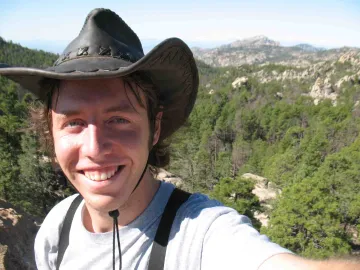
Effect of pathogens on species coexistence
I am fascinated by the question of what allows intra-guild competitors to coexist, and hope to study this phenomenon both theoretically and empirically. Right now the specific question I am asking is, "How do parasites, diseases, and other pathogens affect coexistence?" I want to understand when they promote coexistence, and when (if ever) they undermine it. I am still developing a research plan, but I think my model organisms will be desert annual plants and parasitic fungi.
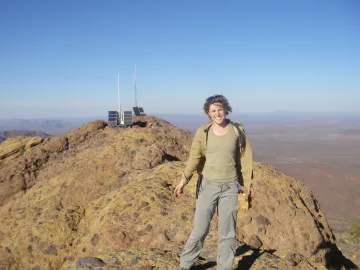
Biodiversity Patterns
I am interested exploring patterns of biodiversity empirically and theoretically. Currently, I am incorporating predator avoidance (indirect predator effects) into multi-trophic models of population dynamics to look at its effects on coexistence between similar species. I am beginning empirical work with a community of aquatic insects in mountain streams.

Scale dependence in marine populations
For my dissertation research, I studied how spatial variation in local density-dependent processes influences regional dynamics. In collaboration with Marcel Holyoak, I investigated the effects of local resource distribution, dispersal rate, and the strength of density dependence on regional dynamics in a highly manipulable microcosm system, in which we could track population dynamics over time. Applying the same principles to a field system, I studied Petrolisthes cinctipes, a filter-feeding porcelain crab that lives in intertidal cobblefields along the Pacific coast. Based out of Bodega Marine Laboratory, I parameterized models of local density-dependence in this organism using field and laboratory experiments. For Petrolisthes cinctipes, the primary sources of density dependence are gregarious settlement, competition, and predation. With Leah Akins, I quantified the spatial variation that influences these process at two scales: variation in P. cinctipes density, predator abundance, and larval supply among rocks within sites and among sites. By integrating information about spatial variation into empirically-based models of local dynamics, we can predict what local processes are most important when "scaling up" to regional dynamics. For links to publications and Megan's CV, see her website.
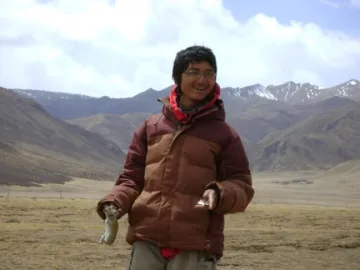
Diversity maintenance mechanisms in different systems
I am interested in how the mechanisms of diversity maintenance differ between different systems, such as deserts and tropical forests. Recently, I have been focusing on frequency-dependent predation as a coexistence mechanism with a view to understanding how it might be studied in different ecosystems.
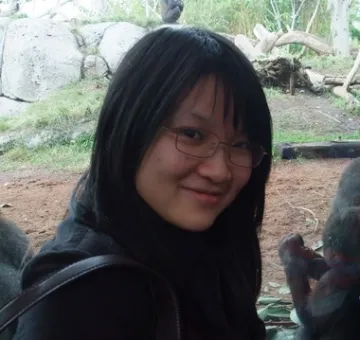
Models of species coexistence in a temporally varying environment
I study mathematical models to understand how environmental variation affects species coexistence. So far, I have studied the coexistence mechanism called relatively nonlinear competitive variance (aka relative nonlinearity) in the lottery model. I found that the storage effect is a much stronger mechanism than relative nonlinearity. However, relative nonlinearity does have important effects if some species have large adult death rates while other species have small adult death rates. I want to study other models and other mechanisms in my PhD work
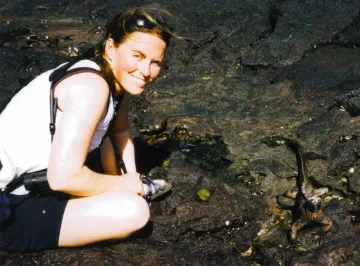
Environmental variation and species interactions in amphibian communities
I'm interested in how environmental variation promotes diversity within species and communities, and how mechanisms such as the storage effect that function through environmental variation can affect endangered species, in particular. My research focuses on a grassland salamander community in the Central Valley of California that includes the threatened California tiger salamander (Ambystoma californiense), hybrid tiger salamanders (A. californiense crossed with A. tigrinum mavortium, an introduced tiger salamander from the central US), and the California newt (Taricha torosa).
I'm using a combination of artificial pond experiments and field experiments to look at whether and how environmental variation promotes coexistence between the two native species, Ambystoma californiense and Taricha torosa, and how coexistence mechanisms operating in the native community are influenced by the addition of hybrid salamanders. Additionally, I'm looking at how environmental variation influences hybridization dynamics between A. californiense and A. tigrinum mavortium and whether mechanisms associated with environmental variation can contribute to the maintenance of genetic polymorphism within hybridizing populations of tiger salamanders. Besides experiments, I'm using theoretical modeling and data from field surveys/sampling to investigate how dispersal and landscape structure interact with local community dynamics to influence species diversity and hybrid spread on a regional scale.
From a conservation perspective, my work is motivated by an interest in how landscape alteration may influence amphibian diversity and species coexistence within extant communities, and in particular how common pond manipulations and the loss of vernal pools in the California Central Valley might influence California tiger salamander populations.
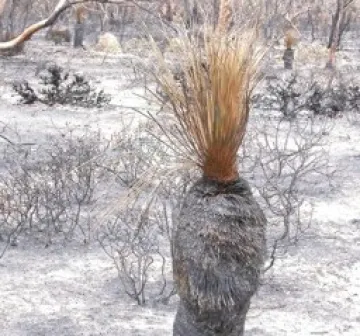
Spatial models of species coexistence
I study mathematical models to understand how disturbance, such as fire, affects species coexistence. Fire is known to be an important factor in many ecological systems. In plant communities, the combined effects of opening up space, burning biomass, and releasing nutrients to the soil offer a variety of environmental conditions. When burns are relatively frequent, and a stable burning regime has persisted on evolutionary time scales, many species develop specific responses to fires. Previous theory has shown that, when species respond differently to environmental fluctuations, coexistence can be promoted by certain types of interactions between environmental and competitive factors. In this paper, we demonstrate how response strategies to fire can form an axis of differentiation, allowing species to stably coexist. In short, the action of differing fire response strategies can generally provide a stabilizing storage effect for the coexistence of species.
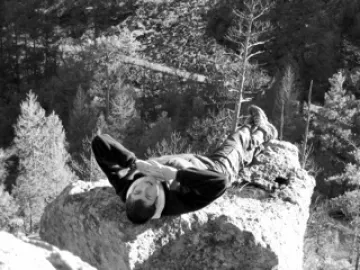
Empirical study of ecological concepts
I am interested in population and community dynamics in variable environments, especially how environmental heterogeneity enhances persistence. I have a field system in streams in the Catalina Mountains, focusing on the persistence of various aquatic organisms in pools. I have worked also on models and experiments for understanding annual plant coexistence. Below I have included the abstract of a talk I gave at the ESA 2008 on this topic.
Species-specific germination speed and coexistence in a desert annual plant community. Desert annual pants are frequently the subjects of coexistence studies with a focus on the role of environmental variation. Germination rates are observed to vary substantially over time forming the basis of the storage-effect coexistence mechanism. Laboratory germination studies have reproduced some of this variation, but do not replicate the full range of conditions found in the field. Here we discuss one aspect of field variation that potentially has a major effect on plant species coexistence, but has been neglected in the past. Experimental and observational data from the desert annual plants at our field site near Portal, AZ show distinct species-specific differences in the speed of germination following rainfall. This indicates an important and previously unexplored opportunity for covariance between competition and the environment, a key quantity for coexistence by the storage effect. Most seeds are at or near the surface, and so moisture at the soil surface is critical for germination. Duration of this moisture varies greatly due to duration, and spacing of rainfall events, and also due to solar radiation, temperature, humidity and wind following these events. Field observations and laboratory experiments show that the observed differential germination speed is strong enough to lead to different species dominating due to different durations of soil moisture. Thus, variation in duration of surface soil moisture potentially contributes substantially yearly variation in the species composition of the annual plant community. Using data on germination speed from field observations and germination experiments in the lab, we built a model linking fluctuations in surface soil moisture and species’ germination speeds to predict the crop of plants resulting from specific rainfall patterns. Our model implies that the interaction of species-specific germination speed with variation in soil moisture makes a major contribution to the storage-effect coexistence mechanism in this community. For example, species that germinate quickly have greater opportunity to take advantage of short-duration rainfall and surface soil moisture, while other species require a longer period of surface soil moisture to successfully germinate, but may be superior competitors once germinated. Incorporating the interaction between germination speed and the duration and spacing of rainfall greatly expands the opportunities for species coexistence in this community. This increased understanding of the factors controlling community composition also provides a more refined understanding of the long-term stability of species composition.
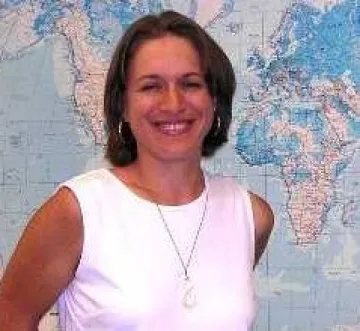
Environmental variation and species interactions
Ecology is challenged to find simple ways to understand the messiness of the natural world. I like to work from a metacommunity context, accepting that natural ecosystems contain a variety of different habitat types, and that this environmental variation affects the interactions of species within ecosystems. My PhD research specifically involves using natural annual plant systems to test how variation in the environment affects species coexistence. I am also interested in how environmental variation affects food-web interactions, and generally interacts with other forms of density dependence. My field sites are in the Chihuahuan desert and at the Bodega Marine Reserve.
Anna's CV in pdf
Recent Postdocs

Communities in varying environments
Coexistence in a temporally varying environment is predicted to arise when species differ in their temporal patterns of resource consumption. However, key to this outcome is coupling of resource consumption and resource availability. High resource consumption rates, due to favorable environmental conditions, are expected to draw down resources, causing high competition. The phenomenon is called covariance between environment and competition (covEC). For coexistence to occur, covEC must be weaker for a species perturbed to low density (an “invader”) compared to an unperturbed species (a “resident”). However, these outcomes have not been thoroughly investigated in models. Instead, the formulation of models often implicitly includes them. Thus, the theory is incomplete because there is no satisfactory theory of this key component, covEC. Moreover, it has been suggested detecting covEC in nature provides a powerful means of testing coexistence by the storage effect. The phenomenon of covEC therefore requires a thorough theoretical understanding. Here we extend the MacArthur consumer-resource model to varying environments. The explicit resource dynamics in the MacArthur model allow a theory of covEC to be developed. Our approach was to develop quantitative measures of factors contributing to covEC, and studying their effects in computer simulations. We found that relative speeds of resource consumption, consumer dynamics and environmental variation have major effects on covEC. Resource speed by far had the dominant effect and can be divided into two major components, resource amplitude, and resource phase relative to consumers. Resident covEC is maximal when resource amplitude is greatest and phase relative consumers is zero, and this is achieved when resources turn over rapidly, most strongly promoting coexistence by the storage effect. These results allow us to address the fundamental ideas of Hutchinson’s Paradox of the Plankton. While they do show that seasonal environmental variation can promote coexistence of consumers on limited resources, it produces very different predictions about time scales of environmental change and consumer dynamics compared with Hutchinson. Contrary to Hutchinson’s predictions we find that slow consumer dynamics are favorable to coexistence and do not lead to averaging of environment fluctuations, nullifying their effects. Critical to coexistence is factors strengthening covEC for residents, found here to be fast resource dynamics, not intermediate consumer dynamics.

Non-equilibrium dynamics and species coexistence
Non-equilibrium dynamics of natural ecosystems have a major role in generating and maintaining biodiversity. The main objective of my research is the mechanistic understanding of this role in both ecological and evolutionary context. In particular I am interested in life history evolution with frequency dependent selection in temporally fluctuating and spatially heterogeneous environments.
So far I have studied the conditions for the development of polymorphisms in initially monomorphic populations leading to adaptive speciation, allowed by different regimes of spatial and temporal heterogeneity (Mathias et al., 2001; Cheptou and Mathias, 2001; Mathias and Kisdi, 2002).
Currently I am studying the competitive mechanisms promoting coexistence in a multiple resource competition model of phytoplankton species, in the context of a generalized theory (Chesson, 1994; Chesson and Huntly, 1997; Chesson, 2000a, b). In this model the growth rate of the species is a non-linear function of the limiting factors, which can result in endogenously created oscillations of density. This mechanism has enormous stabilizing potential for the coexistence of a surprisingly high number of species on few resources. My goal is to understand the details of the role of relative nonlinearity in species coexistence, which has not yet been investigated sufficiently in this case.
In the future I would like to extend the theory of species coexistence in competitive systems to life history evolution in order to understand the mechanisms that promote the coexistence of different life history strategies in temporally fluctuating and spatially heterogeneous environments.
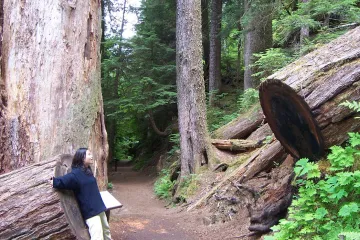
Interactions between Predation and Resource Competition
To study problems in community ecology I have been investigating mathematical models of species interactions which take the form of nonlinear multidimensional Markov processes in continuous space. The basic questions concern species coexistence, which means finding conditions under which no species density converges to zero with time. The particular mathematical techniques are invasion analysis and quadratic approximations of the model. The particular ecological problem studied is the effect of a common enemy ("apparent competition") on the coexistence of species that compete for common resources. Biodiversity and coexistence are well studied by many ecologists over the past century; however, this is the first study which consider both resource and apparent competition in a stochastic model.
jjkuang@u.arizona.edu
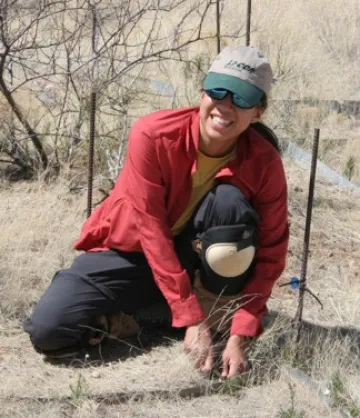
Physiological Ecology of Plant Invasions
I am studying the causes of the dramatic irruption of the Eurasian invasive plant, Erodium cicutarium, in the San Simon Valley of southeastern Arizona. It many areas, it is now 95% or more of the winter annual plant biomass, up from a miniscule presence away from roads in the 1980s. At the same time, native winter annual plants have become very rare and are showing changes in species composition. This new monoculture potentially has profound implications for biodiversity, habitat quality, ecosystem functioning and forage quality of the rangeland. My research applies a physiological, ecosystem, community and theoretical approach to understanding the characteristics associated with the irruption and distribution of E. cicutarium and its impacts for biodiversity in the San Simon Valley.
Former Lab members
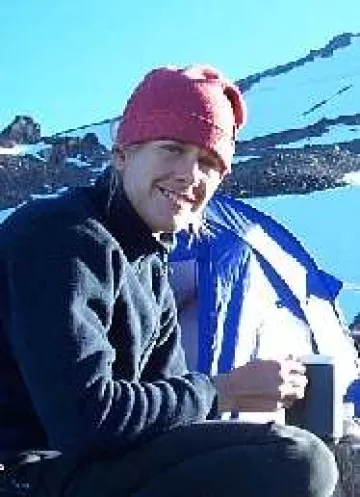
The persistence of species in patchy landscapes
My research focuses on testing and refining theory that makes predictions about the persistence of species in heterogeneous landscapes, including metapopulation and related spatio-temporal theory. So far, I have concentrated on the spatial and temporal dynamics of populations and communities in landscapes that have been modified by humans, through habitat fragmentation and grazing. I am interested in how the life history characteristics of species determine the response of species to landscape heterogeneity. I use quantitative methods to test theory and have approached this work using data from a large-scale, long-term field experiment for beetles and data for a continental scale study of arid zone birds in Australia.
I am currently broadening this focus to explore what this same theory predicts about patterns of biological diversity in naturally patchy landscapes. I am focusing on the grassland plant community in serpentine patches in a non-serpentine matrix (in the University of California’s McLaughlin Reserve). Right now, I am particularly interested in spatial scale and the relationship between diversity and invasibility (Shea and Chesson 2002).
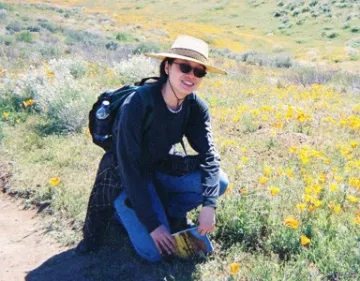
Theory of multispecies interactions; human-environment interactions
I study the theory of multispecies interactions, with specific focus on the matrix of coefficients for all pairwise interactions in a community. Specific projects include: 1) Determining relationships between different patterns of direct and indirect competitive (or facilitative) interactions and the structure of model community matrices; 2) determining patterns of shared resource use that result in specific community matrices; and 3) developing techniques to do 1) and 2). I also study human-environment interactions using theory from ecosystem ecology and demography.
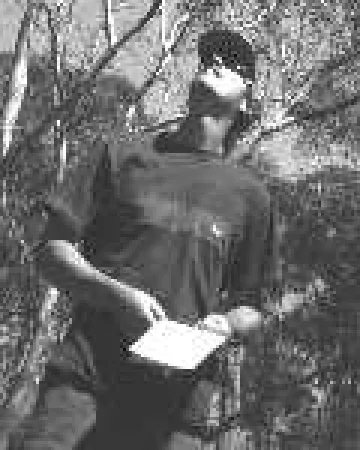
Population dynamics and spatial heterogeneity
My main research interest is population dynamics, especially how small-scale heterogeneity affects dynamics at larger scales. Understanding how spatial and temporal heterogeneity affect the dynamics of populations and communities is fundamental to ecology. Indeed, answers to the most prominent questions in ecology involve the pervasive influence of heterogeneity. Why do species coexist? Why are there so many species? Why do some species cycle whereas others don't? How does habitat fragmentation affect extinction? Why are some species more invasive than others? Spatial and temporal variation in population densities and in the physical environment are essential considerations in these questions. My current research and research to date focuses on the effects of spatial heterogeneity. Whereas empirical studies have typically focused on heterogeneity exclusively, theory demonstrates that population dynamics are altered by spatial heterogeneity only when heterogeneity interacts with nonlinear demographic processes - the pillar for research in the Chesson lab. The aim of my research is to develop empirical tools to measure the interaction of nonlinearity and heterogeneity and to use these tools to probe real populations. Thus, I tackle the important issue of how to integrate theory and models with data from real systems, to understand how the interaction of spatial heterogeneity and nonlinearity alters population dynamics. I use these insights to address important basic and applied questions in ecology.
Collaborators

Diversity maintenance and nonlinear dynamics
In collaborating with the Chesson Lab, I am particularly interested in relative nonlinearity as a coexistence mechanism. I work in other areas of mathematical biology modeling, including nonlinear ecological models, stoichiometric ecology, spatial ecology, and epidemiology. I have also studied random, inhomogeneous, and dynamic graphs.
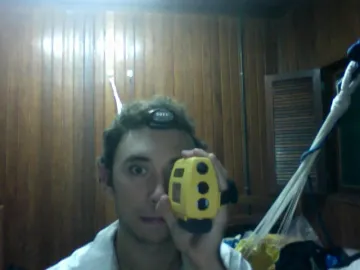
Diversity maintenance in tropical plant communities
The classic gap hypothesis suggests that canopy gaps promote forest diversity by favoring the regeneration of tree species with high light requirements (i.e., shade intolerant species). However, whether gaps act to maintain forest diversity remains an unanswered question. We argue that canopy gaps can promote coexistence between tree species through the ‘storage effect.’ Certain combinations of environmental conditions and species’ traits can advantage species when they are rare and promote their long-term persistence in the community through the ‘storage effect.’ These combinations are likely to be found in canopy gaps. For example, gaps (and subsequently light environments) vary in both space and time and tree species appear to be differentiated in terms of their ability to tolerate shade and respond to increases in light. Furthermore, when gap environments are favorable to abundant species their ability to increase in dominance is likely limited (relative to rare species) because of increased within-species competition (i.e., covariance of environmental favorability and competition). Finally, rare species will likely persist even when favorable gap conditions are infrequent because adult trees are long-lived. We evaluate the ‘gap storage hypothesis’ with quantitative analyses that incorporate realistic patterns of variation in light environments (i.e., gaps) and trade-offs between species ability to tolerate shade and grow in high light. We show that species differentiated along this trade-off may coexist via the ‘storage effect.’ We conclude that the ‘storage effect’ may act to maintain forest diversity because of canopy gaps.




